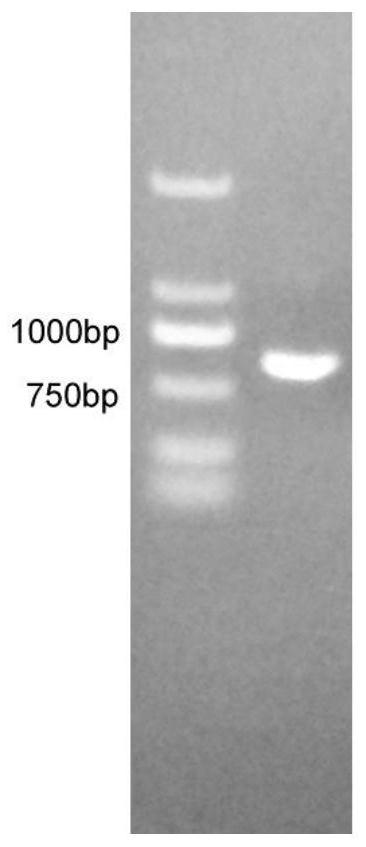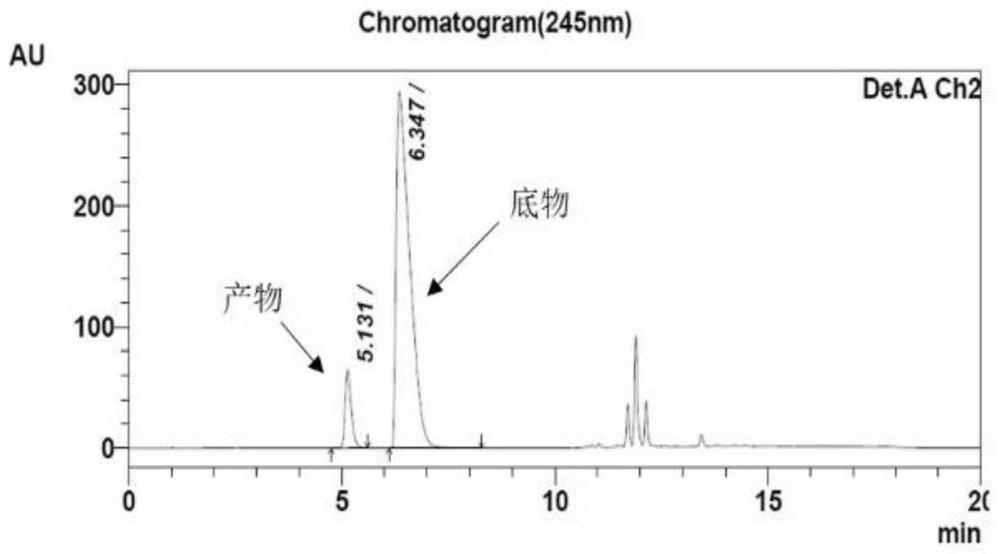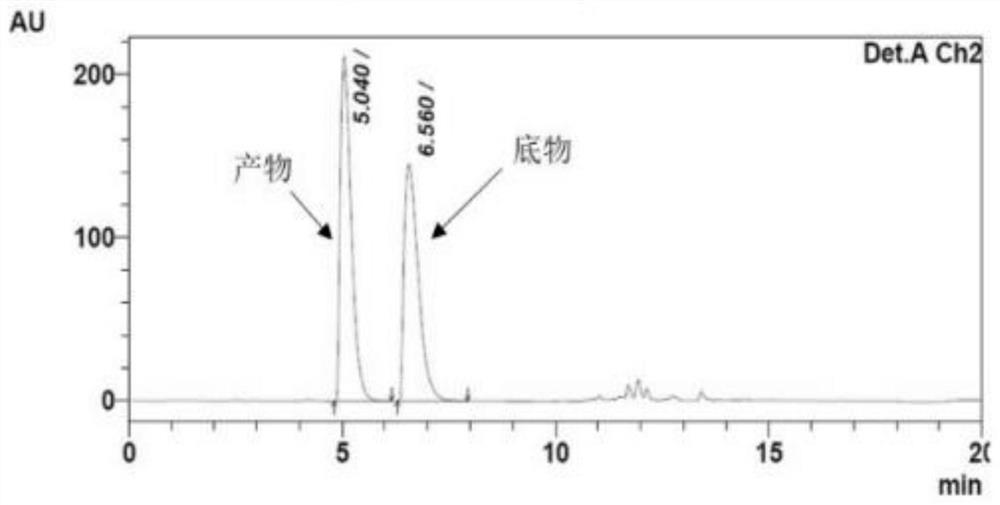An improved cyanoreductase and its application in the synthesis of 3-chloropyrazine-2 methylamine
A technology of cyanopyrazine and reductase, which is applied in the direction of enzymes, biochemical equipment and methods, fermentation, etc., can solve the problems of large amount of organic solvent usage, heavy metal pollution, high production cost, etc. The effect of system green environmental protection and performance improvement
- Summary
- Abstract
- Description
- Claims
- Application Information
AI Technical Summary
Problems solved by technology
Method used
Image
Examples
Embodiment 1
[0029] Construction of cyanoreductase mutant library:
[0030] The whole gene synthesis sequence is shown in SEQ ID No.1. Two restriction sites, Nde I and Hind III, were selected and inserted into the pET-41a(+) expression vector, and the obtained recombinant expression vector was named pET41a-VcNR. According to the results of homology modeling and substrate docking analysis, it was found that the 120th alanine and the 155th glutamic acid in the substrate structure were relatively close to the substrate, which may be involved in the binding of the enzyme to the substrate. In order to achieve saturation mutation at the above two sites at the same time, we designed the following 6 primers and constructed a mutant library, see Table 1 for details.
[0031] Table 1 PCR primer list
[0032]
[0033] Use pET41a-VcNR as a template and use the above primers for PCR amplification. The PCR system is: 10 μL of 5×PCR buffer, 4 μL of 2.5 mmol / L dNTPs, 0.5 μL of HS DNA polymerase, 0.5...
Embodiment 2
[0038] Expression, screening and identification of cyanoreductase mutants:
[0039] Transfer 200 μL of the overnight mutant bacterial solution to a new 96-well plate, and each well of the plate contains 1 mL of fresh LB medium, in which the concentration of kanamycin is 50 μg / mL and the concentration of IPTG is 1.0 mmol / L. Induce the culture at 25°C for about 20 hours, centrifuge to discard the supernatant, and collect the bacteria. Add 600 μL reaction solution to each well, including: 10mmol / L substrate 2-chloro-3-cyanopyrazine, 20g / L glucose, 1mg / L NADP, 1g / L glucose dehydrogenase, 0.5g / L cyanoreductase, 100mmol / L potassium phosphate buffer solution (pH=8.0), shaken at 35°C for 24 hours, and then analyzed the reaction solution by HPLC to detect the transformation rate of the mutant. The results showed that the conversion rate of the control group was about 9% ( figure 2 ), while the transformation rate of the mutants with improved activity screened out was close to 53% ( ...
Embodiment 3
[0042] Transfer the preserved bacteria in glycerol to 5 mL of LB test tube medium containing kanamycin for activation culture (cultivate at 37°C for 12 hours), and transfer the activated culture to 400 mL of LB liquid medium containing kanamycin according to the inoculum size of 1%. In 37°C, culture the cell concentration A600 to 0.6-0.8, add IPTG (final concentration 0.1mmol / L) to induce culture at 25°C for 16 hours, and collect the cells by centrifugation. Take 0.1 g of bacteria and resuspend in 10 mL of potassium phosphate buffer (10 mmol / L, pH 7.5), sonicate for 15 min in an ice-water bath, collect the supernatant and precipitate by centrifugation, and detect the expression of the target protein by SDS-PAGE. The size of the target protein is about 28 kDa ( Figure 4 , wherein, A is the soluble protein in the cell disruption solution, B is the insoluble protein in the cell disruption solution), the supernatant is pre-frozen at -20°C, vacuum freeze-dried for 48 hours, and cru...
PUM
 Login to View More
Login to View More Abstract
Description
Claims
Application Information
 Login to View More
Login to View More - R&D
- Intellectual Property
- Life Sciences
- Materials
- Tech Scout
- Unparalleled Data Quality
- Higher Quality Content
- 60% Fewer Hallucinations
Browse by: Latest US Patents, China's latest patents, Technical Efficacy Thesaurus, Application Domain, Technology Topic, Popular Technical Reports.
© 2025 PatSnap. All rights reserved.Legal|Privacy policy|Modern Slavery Act Transparency Statement|Sitemap|About US| Contact US: help@patsnap.com



